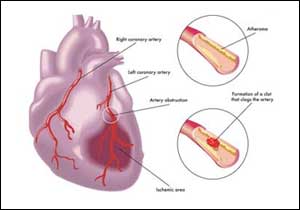- Home
- Editorial
- News
- Practice Guidelines
- Anesthesiology Guidelines
- Cancer Guidelines
- Cardiac Sciences Guidelines
- Critical Care Guidelines
- Dentistry Guidelines
- Dermatology Guidelines
- Diabetes and Endo Guidelines
- Diagnostics Guidelines
- ENT Guidelines
- Featured Practice Guidelines
- Gastroenterology Guidelines
- Geriatrics Guidelines
- Medicine Guidelines
- Nephrology Guidelines
- Neurosciences Guidelines
- Obs and Gynae Guidelines
- Ophthalmology Guidelines
- Orthopaedics Guidelines
- Paediatrics Guidelines
- Psychiatry Guidelines
- Pulmonology Guidelines
- Radiology Guidelines
- Surgery Guidelines
- Urology Guidelines
Simultaneous Dual-troponin testing safely rules out MI very early

New strategies combining the concentrations of both cardiac troponin type I (cTnI) and type T (cTnT) may allow for early and safe rule-out of acute myocardial infarction (AMI), according to a new study published in the journal Circulation. But the combined-troponin testing does not seem helpful for the rule-in of AMI.
The study was conducted by Noreen van der Linden, MD, Ph.D., Maastricht University Medical Center, the Netherlands, and colleagues, evaluate the diagnostic performance of combinations of high sensitivity (hs) cTnI and hs-cTnT for the early diagnosis of AMI. This was based on a primary cohort of 2225 patients suspected of having MI and a similar 2537-patient validation cohort, both drawn from other studies.
cTnI and cTnT are subtypes of troponin protein which are very specific and scientific indicators of damage to the heart muscle (myocardium). They are measured in the blood to differentiate between unstable angina and MI in people with acute coronary syndrome or chest pain.
For finding the relevance of the cardiac troponins for ealry diagnosis of AMI, the diagnostic performance of combining hs-cTnI and hs-cTnT concentrations were evaluated in a large multicenter diagnostic study of patients with suspected AMI. The optimal rule out and rule in thresholds were externally validated in a second large multicenter diagnostic study. The proportion of patients eligible for early rule out was compared with the ESC 0/1 and 0/3 hour algorithms.
Based on the study, following inferences were made:
- combining hs-cTnI and hs-cTnT concentrations did not consistently increase overall diagnostic accuracy as compared with the individual isoforms
- the combination (hs-cTnI and hs-cTnT) improved the proportion of patients meeting criteria for very early rule-out
- application of optimized cut-off values using the sum and product of hs-cTnI and hs-cTnT concentrations led to an increase in the proportion ruled-out after a single blood draw to 34-41% in the original
- use of a combination algorithm showed comparable results for rule out cohort 99.9% and rule-in original cohort 74.4%.
"The major benefit of combining cardiac troponin T and I is the increase in number of patients eligible for safe rule-out after one single blood draw at presentation, from approximately 10% to 40% of patients," several authors of the study wrote to theheart.org .
They pointed out that patients in the two cohorts entered their international studies consecutively and so are likely "representative of the overall patient population presenting to an emergency department with symptoms suggestive of chest pain."
Used individually, the high-sensitivity troponin assays have shown great safety in MI rule-out algorithms, "but few patients can be ruled out within an hour," observed James A. de Lemos, MD, University of Texas Southwestern Medical Center, Dallas, in an interview. Many more can safely go home within 3 hours after serial testing.
The dual-troponin strategy of the current analysis, he said, "is conceptually interesting, like much of what this group does," he said, agreeing that it has potential for expanding the proportion of patients in whom MI can be safely ruled out very early.
The strategy could potentially be considered in Europe, which is "about 6 or 7 years ahead of the US with high-sensitivity troponin," noted de Lemos, who was not involved in the study. But here in the United States, "We have to get our heads around one high-sensitivity troponin before we start thinking about using two of them in the same patient."
"New strategies combining hs-cTnI and hs-cTnT concentrations may significantly increase the number of patients eligible for very early and safe rule-out, but do not seem helpful for the rule-in of AMI," concluded that authors of the study.

Disclaimer: This site is primarily intended for healthcare professionals. Any content/information on this website does not replace the advice of medical and/or health professionals and should not be construed as medical/diagnostic advice/endorsement or prescription. Use of this site is subject to our terms of use, privacy policy, advertisement policy. © 2020 Minerva Medical Treatment Pvt Ltd